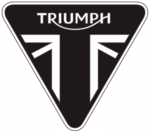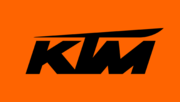Honda CB250R (2018) Bedienungsanleitung
Lesen Sie kostenlos die 📖 deutsche Bedienungsanleitung für Honda CB250R (2018) (281 Seiten) in der Kategorie Motor. Dieser Bedienungsanleitung war für 34 Personen hilfreich und wurde von 2 Benutzern mit durchschnittlich 4.5 Sternen bewertet
Seite 1/281

CBF250NA/300NA / CB250R/300R
OWNER’S MANUAL
CBF250NA/300NA / CB250R/300R
E


This manual should be considered a permanent part of the
motorcycle and should remain with the motorcycle when it is resold.
This publication includes the latest production information available
before printing. Honda Motor Co., Ltd. reserves the right to make
changes at any time without notice and without incurring any
obligation.
No part of this publication may be reproduced without written
permission.
The vehicle pictured in this owner’s manual may not match your
actual vehicle.
© 2018 Honda Motor Co., Ltd.
Produktspezifikationen
| Marke: | Honda |
| Kategorie: | Motor |
| Modell: | CB250R (2018) |
Brauchst du Hilfe?
Wenn Sie Hilfe mit Honda CB250R (2018) benötigen, stellen Sie unten eine Frage und andere Benutzer werden Ihnen antworten
Bedienungsanleitung Motor Honda

16 Oktober 2024

14 Oktober 2024

4 Oktober 2024

3 Oktober 2024

21 September 2024

17 September 2024

5 September 2024

5 September 2024

3 September 2024

3 September 2024
Bedienungsanleitung Motor
- Motor Juki
- Motor Yamaha
- Motor Mitsubishi
- Motor Metabo
- Motor Mercedes-Benz
- Motor Beta
- Motor Husqvarna
- Motor Kettler
- Motor BMW
- Motor Aprilia
- Motor Ducati
- Motor Bodycraft
- Motor Reebok
- Motor KTM
- Motor Milwaukee
- Motor Benelli
- Motor Suzuki
- Motor Triumph
- Motor GasGas
- Motor Hero
- Motor Kawasaki
- Motor Cagiva
- Motor Harley-Davidson
- Motor Texas
- Motor Bajaj
- Motor Derbi
- Motor Emco
- Motor Joy-it
- Motor Moto Guzzi
- Motor MV Agusta
- Motor Piaggio
- Motor Ridley
- Motor SMC
- Motor Victory
- Motor Zero
- Motor Hyosung
- Motor Sherco
- Motor Indian
- Motor Mash
- Motor Royal Enfield
- Motor Anova
- Motor Mahindra
- Motor CRRCpro
- Motor TVS
Neueste Bedienungsanleitung für -Kategorien-

16 Oktober 2024

15 Oktober 2024

15 Oktober 2024

14 Oktober 2024

13 Oktober 2024

13 Oktober 2024

12 Oktober 2024

12 Oktober 2024

11 Oktober 2024

10 Oktober 2024